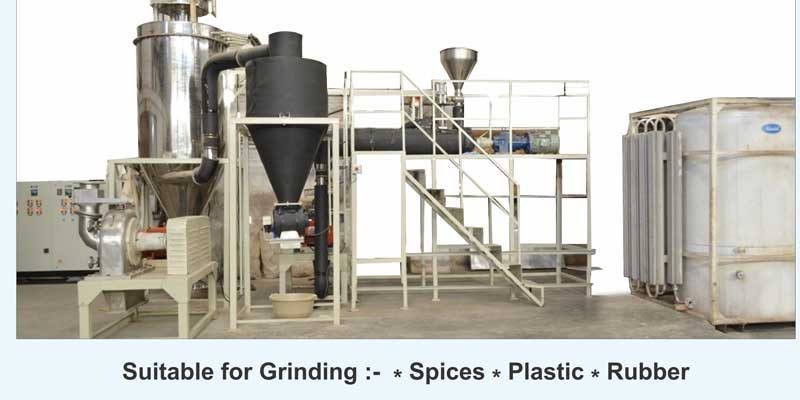Project Report For Cryogenic Grinding of Spice
Introduction
Project report for cryogenic grinding of spice is as follows.
Spices are essential for enhancing flavour, taste, and scent when making food. Additionally, they are useful while producing various medicines. India has the highest levels of production, consumption, and export of spices. The states of Rajasthan, Gujarat, Orissa, and Andhra Pradesh produce a wide range of spices. The task entails building a machine for Cryo-grinding spices.
This innovative innovation in the processing of spices results in higher productivity with superior final product quality compared to conventional spice grinding equipment (aroma and colour). This technique lowers the loss of volatile essential oils from spices and boosts output by controlling the temperature of the grinding chamber with liquid nitrogen.

Product & Application of Cryogenic Grinding of Spice
Indian food and cuisines rely heavily on spices, utilized not only in the home but also in hotels, restaurants, and other eating establishments as well as in the food processing industry. They enhance the flavour, taste, and scent of food. Curry powder, a common ingredient in Indian cuisine, occasionally comprises more than 20 distinct spices. Indian spices are widely utilized in food preparation even in other nations. Some herbs can be used to make medicines, Ayurveda remedies, and cosmetic goods because they contain medicinal characteristics.
Project Report Sample On Cryogenic Grinding of Spice
Get Completely Custom Bankable Project Report
The use of these cryogens in various food processing and preservation processes ushers in a new era of refrigeration distinct from that of traditional VCRs. Cryogenic application is no different from any other operation in that it has pros and cons.
However, a wise use can reduce the drawbacks and increase the benefits that can be obtained from it. Cry-grinding, among other uses, offers a lot of potentials. Particular advantages over conventional processes include lower power usage, size reduction, and retention of colour and flavor in ground samples.
Control and modified atmospheric storage is a crucial storage strategy that is now being tested. Using cryogen has advantages in managing the temperature and the environment. The best freezing technique is called ultra fast freezing. Cryogen can readily fulfill this demand. Researchers are currently experimenting with using cryogen to produce dairy goods like ice cream. Foods that need to be transported frozen can be efficiently done so with cryogen.
A number of techniques have developed that effectively replace mechanical refrigeration processes on board. Commercially, dry ice (solid carbon dioxide) is used to transport food products that are sensitive to heat. Cryogens can therefore be beneficial to the food business if they are well thought out and implemented.
Market Potential Of Cryogenic Grinding Of Spice
The size of the world market for spices was estimated at USD 5.86 billion in 2019 and is anticipated to increase at a CAGR of 6.5% from 2020 to 2027.
Expenses

Product Cost Breakup

Reveneue Vs Expenses

Market Trend

The majority of raw and processed spices are produced and exported by India. India is the world’s top producer of cumin, chili, and turmeric. The demand for processed spices is directly correlated with its consumption in the food processing sector, and this is expected to increase in India over the coming years due to the country’s expanding population, rapidly evolving eating patterns, and rising middle- and upper-class disposable income.
Even so, there is a lot of room for spice exports to other nations. Japan, Sri Lanka, Iran, the United Arab Emirates, the United States of America, the United Kingdom, and Ethiopia are among the nations where the product may be exported. Pure/unadulterated ground spices are in greater demand from customers these days who are becoming more educated.
The market for producers of curry powder and packaged spices could grow greatly with the establishment of many food standards, including FSSAI, FSMS, ISI, and ISO standards. Local markets are easily accessible for buying raw materials throughout India. Marketing spices is not tough. The numerous retail establishments in and around the unit could be prospective bulk purchasers of the spices.
